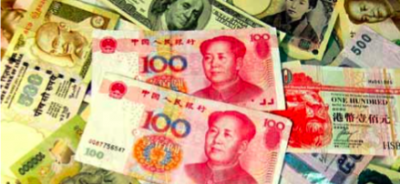The G20 does not exactly have a record of issuing strong statements or achieving breakthroughs in this area. China has been reluctant to let its currency adjust significantly, the announcement last year of a change in its exchange rate regime notwithstanding. And other G20 countries have been reluctant to push the issue. This G20 failing jeopardises the prospects for recovery.
The absence of progress on this front means that global imbalances will be back. Asia is still running current account surpluses and accumulating reserves. The European periphery, previously accustomed to running current account deficits, is no longer in a position to do so. This leaves only the United States on the other side of the equation. US households are saving more than before the crisis, but the country as a whole is not. The IMF projects the US external deficit as soon rising back to 4 per cent of GDP, and it may be overoptimistic.
The return of global imbalances would be worrisome for two reasons. First, imbalances, while not the entire explanation for the financial crisis, were certainly a factor in those events. Foreign capital inflows allowed the US to keep interest rates lower for longer than otherwise and encouraged investors to stretch for yield. Allowing those imbalances to return would not encourage the deleveraging that is needed to reduce financial fragilities.
Second, the growth of the US external deficit, against the backdrop of continuing high unemployment, raises the danger of protectionism. The Fed having spent its bullets and fiscal policy having been sidelined for political reasons, the pressure for US politicians to do something – anything – to encourage employment is intense. At this point, protectionism is the only lever available. Almost everyone would like to see the danger created by this sort of response averted. The question is how.
The answer is for China to allow its currency to rise more rapidly against the dollar. For a long time i’ve actually been on the side of cautioning against pressuring China to act. Letting the Renminbi rise would slow the rate of growth of Chinese exports and shift domestic demand away from locally-produced goods. If nothing else changed, this would mean a growth slowdown for China, or worse. My view has been that China should let the Renminbi rise very slowly as it gradually boosts domestic consumption through the development of financial markets and an effective social safety net, institutional reforms that can only take place slowly over time.
Now, however, the Chinese authorities are actively taking steps to cool off the economy, mainly by instructing the banks to tighten their lending standards. Growth rates accelerating to more than 11 per cent late last year and early this one raised the risk of overheating. They led to worries about a housing bubble. They created visible strains in the labour market.
Why not cool off the economy by shifting some Chinese spending towards imported goods, instead of the current strategy of reducing overall spending? And why not shift the composition of output away from manufactures produced for export and toward services produced for the home market?
The Chinese authorities still hesitate to go down this road. The source of their hesitancy is presumably a reluctance to mess with success – to tamper with a tried and true growth model. Evidently the United States is not the only country where politics stand in the way of the adoption of a sensible economy policy.
Why, then, does the rest of the G20 hesitate to push? There is an understandable caution about putting pressure on the world’s second largest economy, which has considerable capacity to push back. There is the tradition of consensual decision making within the G20. but if the G20 is incapable of taking hard decisions, then what is it good for? The rest of the communiqué will be easy. Whether it says something significant about China’s currency will be the acid test.
Barry Eichengreen is a Professor of Economics and Political Science at the University of California, Berkeley.
This article is from the most recent edition of the East Asia Forum Quarterly, ‘Asia and the G20’.

